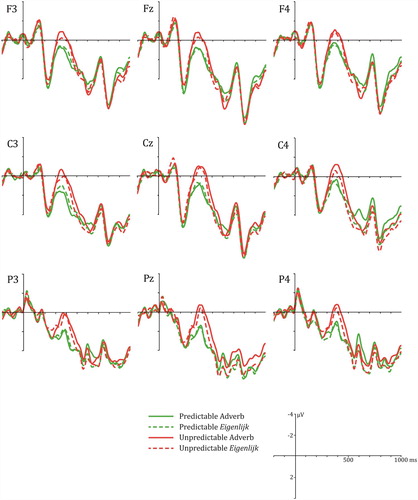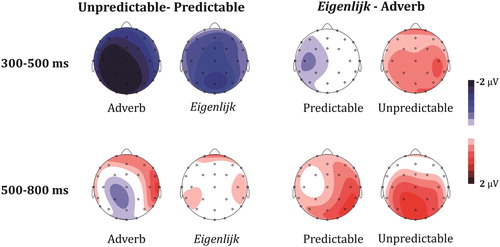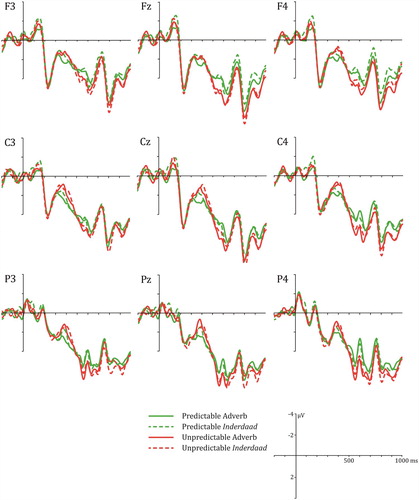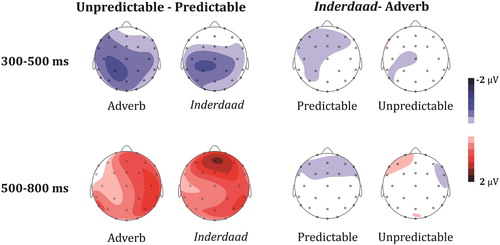Figures & data
Table 1. Example of an experimental stimulus in each condition.
Table 2. Cloze probabilities of critical words (CWs) in each condition.
Figure 1. Grand-average ERPs time-locked to critical words at 9 scalp electrode sites (Experiment 1). Critical words were plain-predictable (green lines) or plain-unpredictable (red lines), and followed an adverb (solid lines) or eigenlijk (dashed lines). Negative is plotted up in all ERP figures.

Figure 2. Scalp topographies of the difference in N400 amplitude (upper panel) and in post-N400 positivity (lower panel) in response to plain-predictable vs. plain-unpredictable words (left panels), and in response to words following an adverb vs. eigenlijk (right panels).



